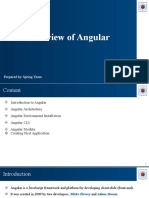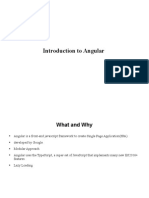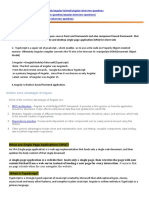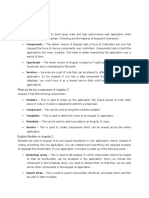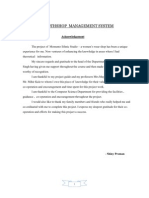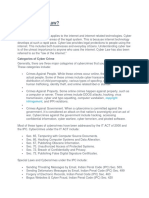0% found this document useful (0 votes)
24 views8 pagesUnit 5
Angular is a TypeScript-based open-source framework for building Single Page Applications, developed by Google and Microsoft. It features a component-based architecture, TypeScript support, and cross-platform capabilities, making it suitable for web, mobile, and desktop applications. The document also outlines the steps for creating an Angular application, explains components and modules, and discusses data binding techniques, including property and attribute binding.
Uploaded by
NavyaCopyright
© © All Rights Reserved
We take content rights seriously. If you suspect this is your content, claim it here.
Available Formats
Download as DOCX, PDF, TXT or read online on Scribd
0% found this document useful (0 votes)
24 views8 pagesUnit 5
Angular is a TypeScript-based open-source framework for building Single Page Applications, developed by Google and Microsoft. It features a component-based architecture, TypeScript support, and cross-platform capabilities, making it suitable for web, mobile, and desktop applications. The document also outlines the steps for creating an Angular application, explains components and modules, and discusses data binding techniques, including property and attribute binding.
Uploaded by
NavyaCopyright
© © All Rights Reserved
We take content rights seriously. If you suspect this is your content, claim it here.
Available Formats
Download as DOCX, PDF, TXT or read online on Scribd
/ 8
































